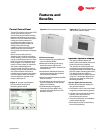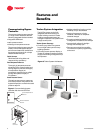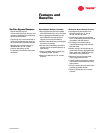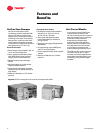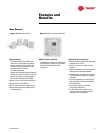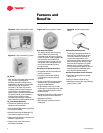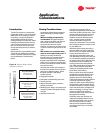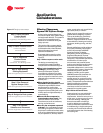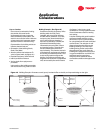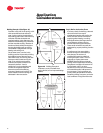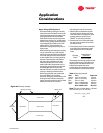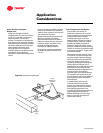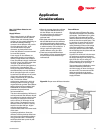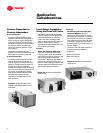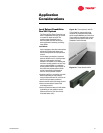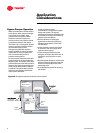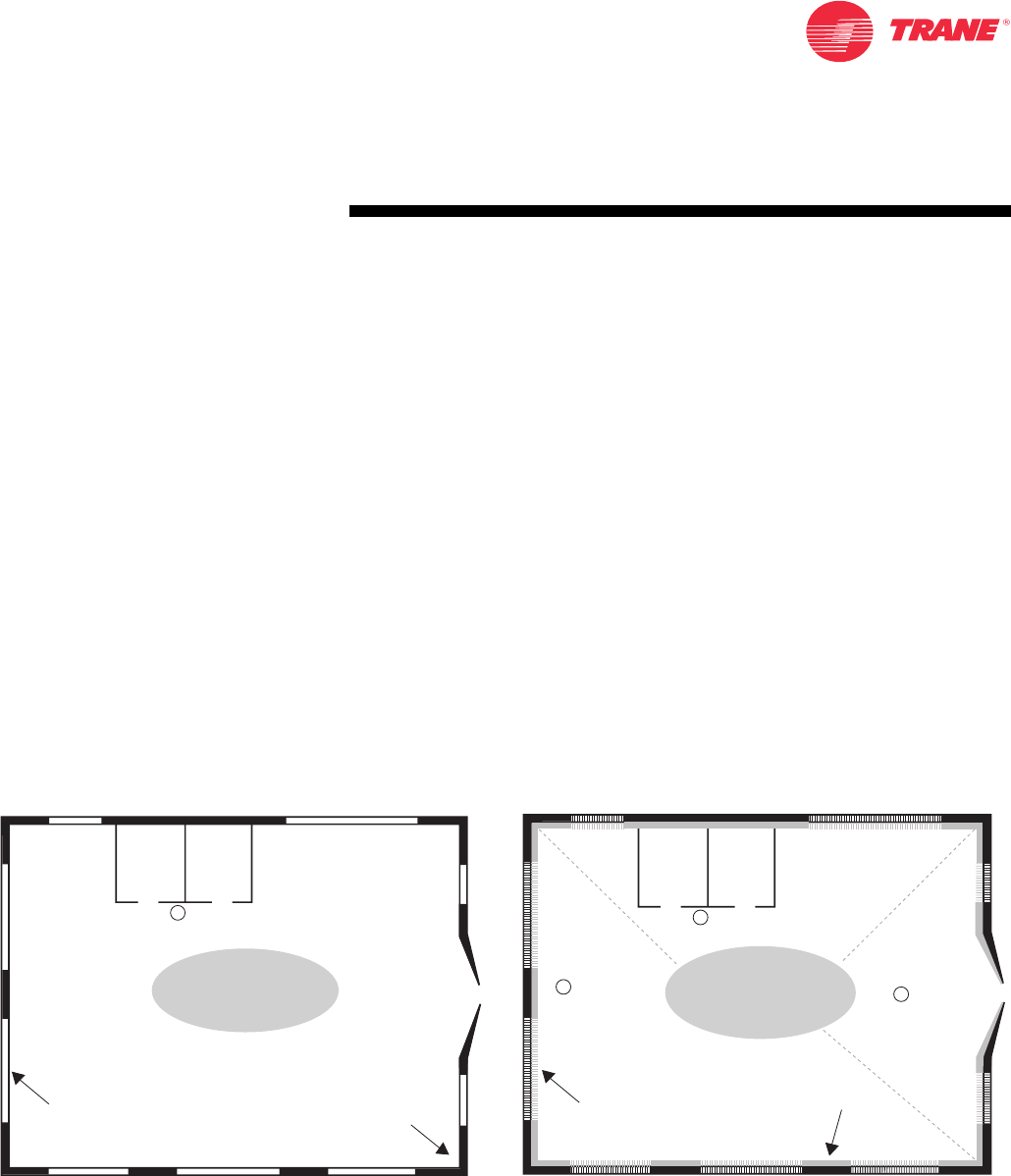
VAV-PRC003-EN 15
Application
Considerations
Cost vs. Comfort
First cost can be reduced by limiting
the number of thermal zones.
Unfortunately, this may impact the
thermal flexibility of the system, and
result in zone comfort issues. Let’s take
a closer look at this important system
decision known as “thermal zoning.”
Characteristics of a building which can
influence thermal load are:
• Orientation of the building (North,
South, East, West)
• Amount and thermal resistance (R-
value) of glass (walls, skylights, etc.)
• Expected occupancy within the area
• Interior partitions and doors
• Varying loads from equipment or
processes
Let’s examine a few building examples
and discuss the zoning criteria of each.
Building Example 1
(See Figure 18.)
Consider an existing single-story office
building which is small, poorly
insulated, with many large windows
and few interior partitions. On a clear,
cool spring day, the entire building is
cool in the morning so heating is
required. By afternoon, however, the
south side of the building being
influenced by the solar load, is warm
and requires cooling. The north side
remains shaded and continues to
require heating. This situation results in
a simultaneous requirement for heating
and cooling for extended periods. Due
to the varying loads throughout the
building, controlling the building as a
single thermal zone (with a single HVAC
unit) cannot satisfy the comfort needs
of all areas. It also is not a good
candidate for a zoning system because
of the simultaneous need for heating
and cooling.
A similar building with good insulation
and fewer shaded windows, on the
other hand, may be a good candidate
for a single thermal zone with individual
comfort zones. The reduction in wall
glass reduces the solar effect on the
building resulting in all areas of the
building having similar load profiles
throughout the day. In this case, the
building has a single thermal zone and
is a good candidate for one HVAC unit.
Individual comfort zones (zone
dampers) will be needed to assure
comfortable conditions throughout the
zone.
Figure 18.
Building Example 1
illustrates a small, poorly insulated office on the left, and improved design on the right.
Men's
Restroom
Women's
Restroom
ThermostatT
Shaded
Windows
Insulated
Walls
Improved Design Elements
• Multiple zone thermostats
• Shaded windows
• Insulated walls
ThermostatT
ThermostatT
Men's
Restroom
Women's
Restroom
Thermostat
T
Glass windows
with no shading
Minimal wall
insulation
Poor Design Elements
• One thermostat for space
• Glass windows with no shading
• Minimal wall insulation



